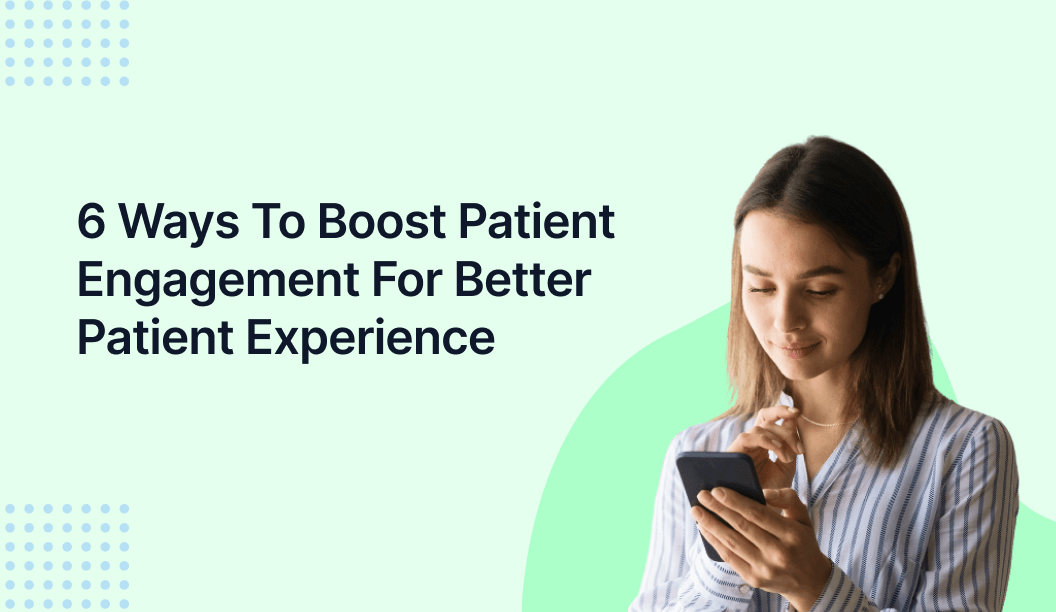In recent years, there has been a growing recognition of the importance of patient engagement in healthcare, as patients increasingly want to be more involved in their care. Studies indicate that patients engaged in healthcare are more likely to have better health outcomes, increased patient satisfaction, and lower healthcare costs.
Over 83% of patients are eager to improve health and wellness, of which 37% want to be more provocative. The respondents to the survey suggest that “healthcare providers will need to counter with stronger patient engagement and activation.” What are you waiting for when your patients are ready to begin their healthcare journey with patient engagement?
Patient engagement is a process where your patients are engaged in their healthcare, in which they are involved in decision-making, provider-patient collaboration, and communication. It enables them to control their health more, leading to better health outcomes.
In this ever-evolving industry, there are numerous ways to boost patient engagement. However, for starters, you need to know what patient engagement is and its importance to the healthcare industry.
Let’s look into ways to achieve their ideal result of patient engagement supporting patient activation – the understanding and willingness to take independent actions to manage their health.
This Blog Includes:
1. Guide patients to activation
Patient activation refers to the degree to which a patient is actively involved in their own healthcare. Getting patients actively involved in their healthcare means they are equipped with the knowledge, skills, and confidence they need to manage their health. It consists in educating patients about their health conditions, providing them with resources and tools to track their symptoms, and encouraging them to communicate openly with their healthcare providers.
“Patient activation is the skill and confidence that equip patients to engage in their healthcare actively.”
Those who are unable to endure the activation often feel overwhelmed in managing their health. On the contrary, as providers guide patients to activation, they can:
- Be involved in the treatment and decision-making processes
- Collaborate with the providers
- Diligently follow prescriptions and provider instructions
- Closely follow the healthcare system
- Improve health outcomes
2. Open and transparent communication
Effective communication is essential for patient engagement and is crucial in promoting patient empowerment, self-management, and overall health outcomes. Technological advancement has transformed communication so patients can access their health information easily and communicate with their healthcare providers through various channels.
A good 85% of patients prefer to text their provider. By making communication easier and more accessible, technology has the power to boost patient engagement.
Effective communication also helps to build trust between patients and healthcare providers, which is critical for patient engagement. When patients feel that their healthcare providers are listening to them, respecting their concerns, and involving them in their care, they are more likely to manage their health actively.
3. Strengthen patient education with resources
Health literacy is a critical component of patient engagement. Patients who better understand their health conditions and treatment options are more likely to be engaged in their care and make informed decisions about their health.
Health literacy has significantly impacted health outcomes, including hospitalization rates, medication adherence, and mortality. Therefore, healthcare providers need to prioritize health literacy as part of patient engagement strategies and work towards creating a healthcare system that is accessible, understandable, and inclusive for all patients.
4. Involve patients in decision-making
A key component of patient engagement is shared decision-making. When patients are involved in the decision-making process, your patients feel they are heard and considered, which can lead to better care and outcomes.
Patients are more likely to follow through with treatment plans, adhere to medication regimens, and take steps to improve their health outcomes. The true ideal result is seen when:
- Patients learn about the treatment options
- The health-related goals are discussed and evaluated
- A treatment plan is consulted and laid out
- Providers understand patient’s preferences
By incorporating shared decision-making into healthcare practice, healthcare providers can improve patient satisfaction, outcomes, and the overall quality of care.
5. Employ remote patient monitoring
Remote monitoring has become quite popular in recent years. Healthcare providers can gather real-time patient data on health status and track changes over time using connected devices, such as wearables, mobile apps, and other remote monitoring tools.
9 out of 10 patients are ready to use remote patient monitoring devices recommended by their providers. It gives them greater flexibility and convenience, as they can receive care from the comfort of their homes, reducing the need for frequent visits to healthcare facilities.
By leveraging remote monitoring technologies, healthcare providers can provide more personalized and effective care while empowering patients to take an active role in their health management.
6. Leverage patient engagement technology
When more than half of patients prefer a digital connection with their providers, why not leverage technology to boost patient engagement?
Technologies help improve patient engagement and ease clinic administration. Be it text messaging, appointment scheduling, appointment reminders, or payment portal, it improves patient satisfaction whilst reducing front desk workload.
By utilizing technology to engage patients, healthcare providers can improve patient outcomes, reduce costs, and provide a more personalized and efficient patient experience.
Prepare to improve patient engagement
Patient engagement is a critical component of high-quality healthcare. By leveraging technology, educating patients about health literacy, involving patients in shared decision-making, and monitoring remote patients, healthcare providers can improve patient outcomes, reduce costs, and provide a more personalized and effective patient experience.
Ultimately, the success of these strategies will depend on a collaborative and patient-centered approach to healthcare, where patients are empowered to take an active role in their own health and well-being.



